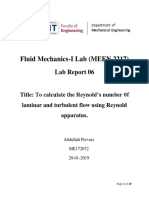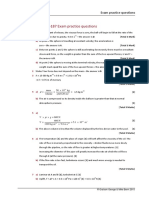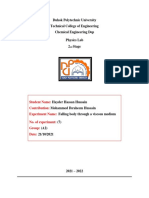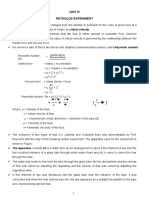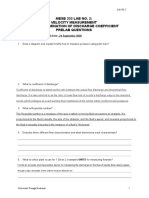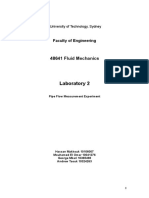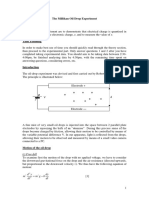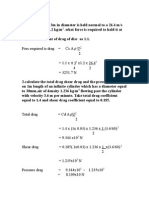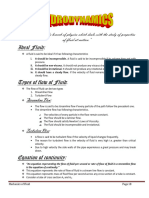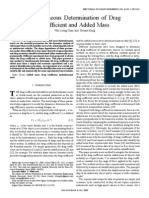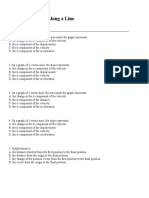0% found this document useful (0 votes)
55 views4 pagesLab Report #2
1) The student conducted an experiment to observe and measure terminal velocity by dropping liquid into a cylinder of oil and timing how long it took to fall set distances.
2) The theoretical background discusses equations related to terminal velocity involving forces, viscosity, buoyancy, and density.
3) The experiment involved using a pipette to drop blue liquid into an oil-filled cylinder while other students recorded the time taken to fall 10cm intervals, with measurements showing the drop reached a consistent velocity after 10 seconds.
Uploaded by
Imran JeferlyCopyright
© © All Rights Reserved
We take content rights seriously. If you suspect this is your content, claim it here.
Available Formats
Download as PDF, TXT or read online on Scribd
0% found this document useful (0 votes)
55 views4 pagesLab Report #2
1) The student conducted an experiment to observe and measure terminal velocity by dropping liquid into a cylinder of oil and timing how long it took to fall set distances.
2) The theoretical background discusses equations related to terminal velocity involving forces, viscosity, buoyancy, and density.
3) The experiment involved using a pipette to drop blue liquid into an oil-filled cylinder while other students recorded the time taken to fall 10cm intervals, with measurements showing the drop reached a consistent velocity after 10 seconds.
Uploaded by
Imran JeferlyCopyright
© © All Rights Reserved
We take content rights seriously. If you suspect this is your content, claim it here.
Available Formats
Download as PDF, TXT or read online on Scribd
/ 4

















